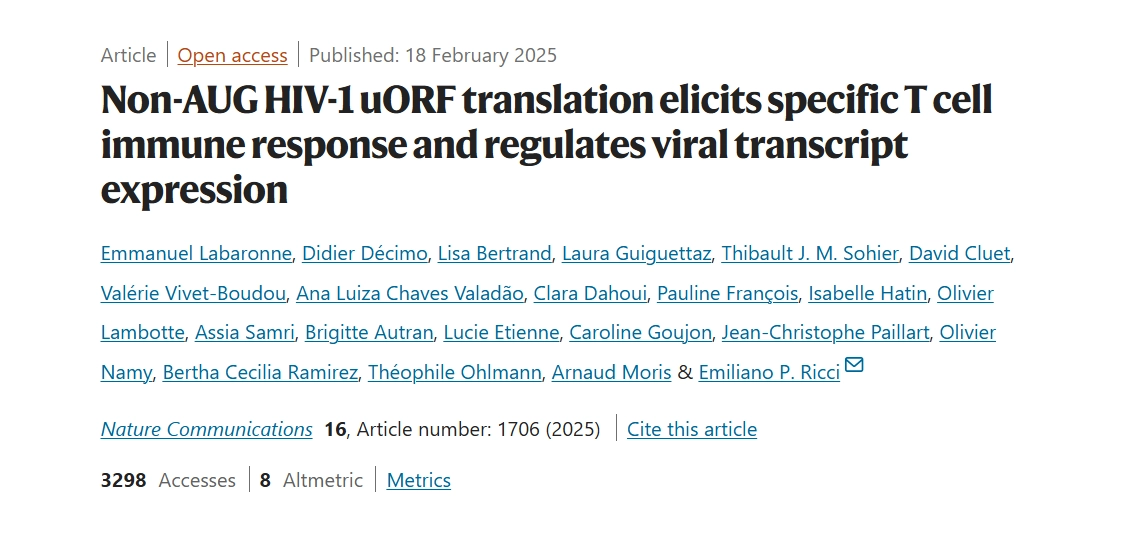Publications
25 February 2025

Non-AUG HIV-1 uORF translation elicits specific T cell immune response and regulates viral transcript expression
Labaronne, E. et al. (2025) ‘Non-aug HIV-1 uorf translation elicits specific T cell immune response and regulates viral transcript expression’, Nature Communications, 16(1). doi:10.1038/s41467-025-56772-3.
Human immunodeficiency virus type-1 (HIV-1) is a complex retrovirus that relies on alternative splicing, translational, and post-translational mechanisms to produce over 15 functional proteins from its single ~10 kb transcriptional unit. Using ribosome profiling, nascent protein labeling, RNA sequencing, and whole-proteomics of infected CD4 + T lymphocytes, we characterized the transcriptional, translational, and post-translational landscape during infection. While viral infection exerts a significant impact on host transcript abundance, global translation rates are only modestly affected. Proteomics data reveal extensive transcriptional and post-translational regulation, with many genes showing opposing trends between transcript/ribosome profiling and protein abundance. These findings highlight a complex regulatory network orchestrating gene expression at multiple levels. Viral ribosome profiling further uncovered extensive non-AUG translation of small peptides from upstream open reading frames (uORFs) within the 5’ long terminal repeat, which elicit specific T cell responses in people living with HIV. Conservation of uORF translation among retroviruses, along with TAR sequences, shapes DDX3 dependency for efficient translation of the main viral open reading frames.

